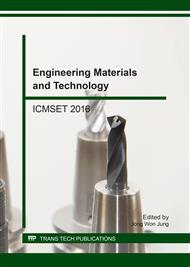p.307
p.313
p.320
p.329
p.335
p.341
p.347
p.354
p.360
The Use of Oil Palm Empty Fruit Bunches (OPEFB) Fibers as Partial Replacement for Imported Recycled Fibers
Abstract:
Papermaking in Malaysia is basically based on recycled (secondary) fibers which are sourced from various parts of the world with prices depending on the quality of the fibers procured. The costs of paper production could possibly be reduced by using local fibers as partial replacement provided that the strength requirements are not compromised; and one such type is the oil palm fibers which are obtained as the by-product of the palm oil industry. This paper reports the use of the oil palm empty fruit bunch (OPEFB) fiber as a partial substitute in the production of corrugating medium. Both unbleached and totally chlorine free (TCF) bleached OPEFB pulps were mixed in different ratios with high quality recycled pulps which had been mechanically and chemically treated. Burst strength results indicate as high as 70% recycled pulp can be replaced by OPEFB pulps yet still having strength properties that are comparable with the industrial produced corrugating medium. Although the effect of bleached pulp is significant at high addition levels of more than 70%, the cost-energy balance will not be effective to use these bleached fibers, and furthermore the utilization of unbleached pulps also gave the same desired results. The use of the underutilized OPEFB fibers for replacement of imported recycled fibers without compromising the paper strength qualities could help the Malaysian paper industry in their quest for finding fiber alternatives.
Info:
Periodical:
Pages:
335-340
Citation:
Online since:
June 2017
Authors:
Price:
Сopyright:
© 2017 Trans Tech Publications Ltd. All Rights Reserved
Share:
Citation:


